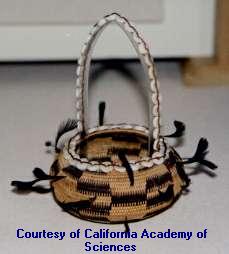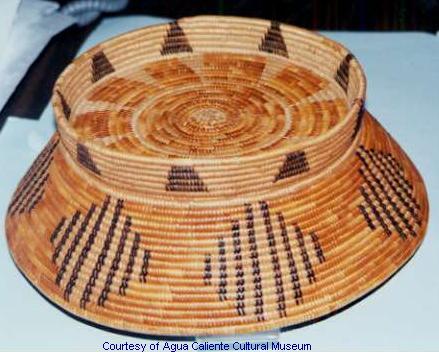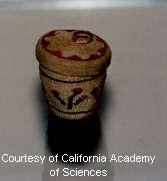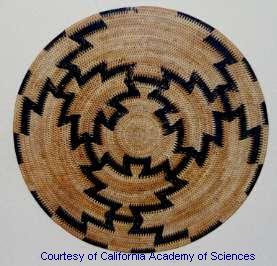
There are three types of weaving to create a basket: coiling, twining and plaiting.
Coiling uses two types of material the bundle and the splint. The bundle makes up the bulk of the basket and coils outward from the center of the basket. The splint is wrapped around the bundle to hold it in place then poked through the previous layer of bundle with an awl. A coiled basket can take months to years to complete. 
Twining uses two types of material as well - the warp and the weft. The warp makes the base and comes out like the spokes of a wheel. The weft is wrapped around these spokes to create the basket. When the basket is finished the warp that sticks out the top is either turned under of cut off. A twined basket can take hours to months to complete. 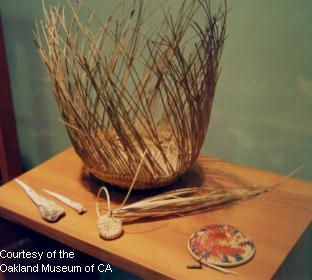
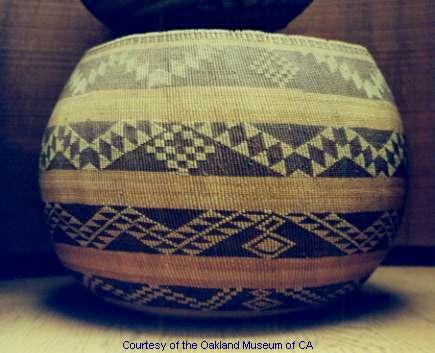
Plaiting is simply layering material over and under other pieces. It is the simplest type of weaving and is often done in grade school art classes. A plaited basket can usually be finished in an afternoon. 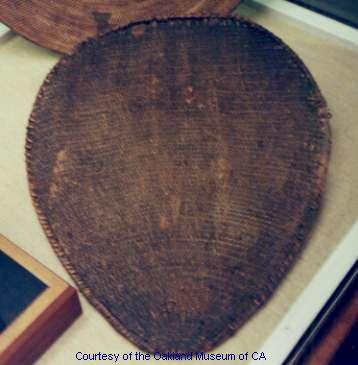
Versatility of basket weaving resulted in baskets of many shapes and baskets made for a variety of uses. Each traditionally formed basket was made for a specific purpose coherent with its shape. With European contact came new basket shapes to mimic things the Europeans had brought with them, often useless other than as decoration – made specifically to sell. Below are traditional basket shapes and baskets with European characteristics.
The Burden Basket
The burden basket was a large, conical basket used, as its name implies, to carry or gather food or materials. Each burden basket had a strap, which would go over the carrier’s forehead or chest when carrying the basket. Sometimes the strap was part of the basket; other times there is a woven net that went over the basket that attached to the strap.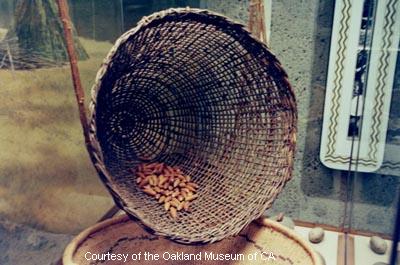
The Cooking Basket
Native Americans used baskets for heating and cooking food. They made these baskets waterproof by tight weaving and/or the application of pinion gum (pine resin) or other such similar material. Cooking was done in the baskets by putting water in with whatever food was to be cooked, then adding a stone that had been heated in the fire. By stirring and keeping the stone moving, the food could boil without the basket being burned.
The Storage Basket
Seeds, such as acorns, were a staple for many Californian Native American cultures. Baskets were made to store foods year round. Some storage baskets were kept off the ground to keep small animals from getting at the food. 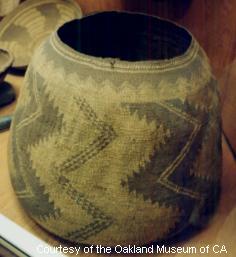
A Hopper
The hopper was used to grind seeds and was simply a conical basket without a bottom. The hopper was placed on the rock on which the seeds were ground.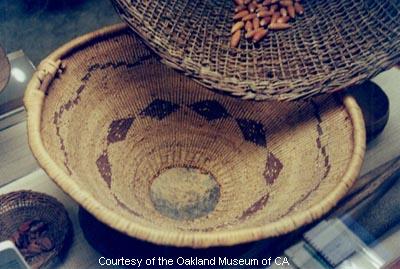
The Winnowing Tray
After seeds or grains were collected, the seed needed to be separated from the hull before eating or cooking with. The seeds would be placed on the tray with hulls, and the winnowing tray would be shaken gently to separate the parts.Winnowing trays were usually twined loosely. 
Fishing Baskets
Baskets were also used to fish. The basic fishing basket (left) had an inner basket and an outer basket. The inner basket had a hole in the center, which the fish would swim through. To prevent it from swimming out the inner basket had spike around the hole that would deter the fish from going back the way it came in. The eel basket (right) was long and slender so the eel could not turn around and swim back out. 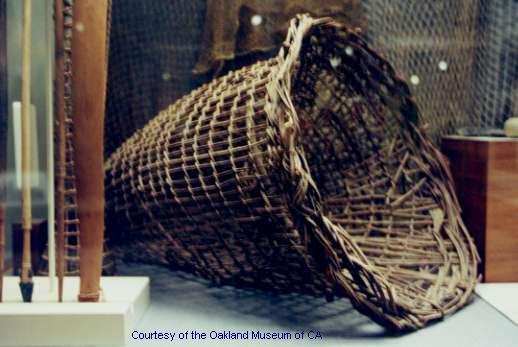
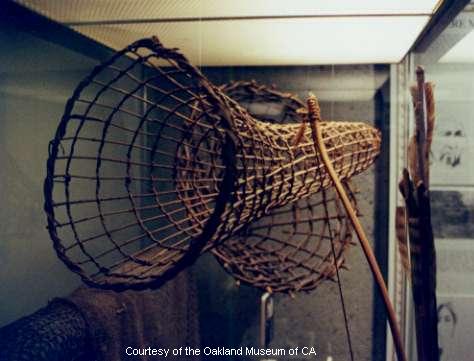
Hats
Some Californian cultures, such as the Hupa, wove hats. The purpose behind these hats is not entirely understood, some believe it was for fashion while others believe they wore the hats to resemble the acorns that were the center of their diet. 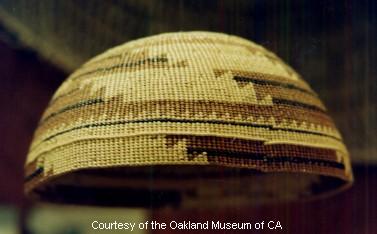
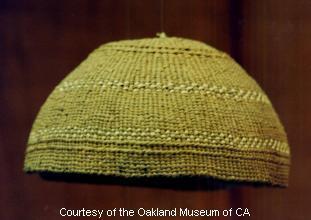
Baby Carriers
Baby carriers were also woven. The child would be placed inside the carrier and it could be strapped to the mothers back, or in the case of the replica on the right, it could be staked into the ground so the mother could gather materials or food in the area. It was an honor for one's carrier to be used to carry a baby. 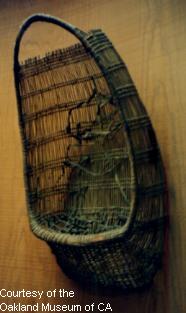
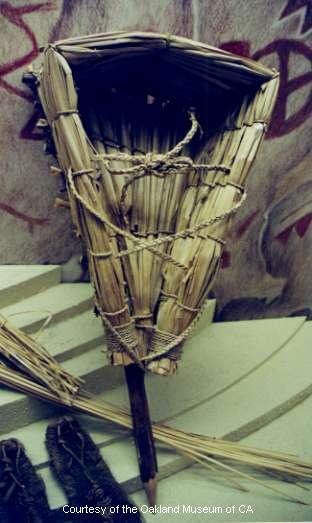
Gift Baskets
The Pomo are best known for their highly decorated gift baskets, although other cultures made them as well. However, gift baskets did not need to be as decorated as this Pomo basket; they could be simple as well.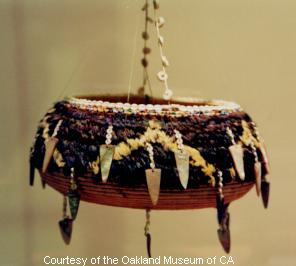
The handle in this Pomo gift basket has no purpose and is directly influenced from European contact. The pedestal on this Cahuilla basket is useless as well, and is not a traditional basket form. It may have been added for a buyer, or it may have just been copied from a European source. The glass beads were either woven into baskets or placed over existing baskets. They were obtained from trading with Europeans. The beads added many more colors than the Native Americans previously had to work with, and were therefore highly prized. Lids on baskets are also European influenced. The lid on this Aleut basket serves no purpose except decoration. 